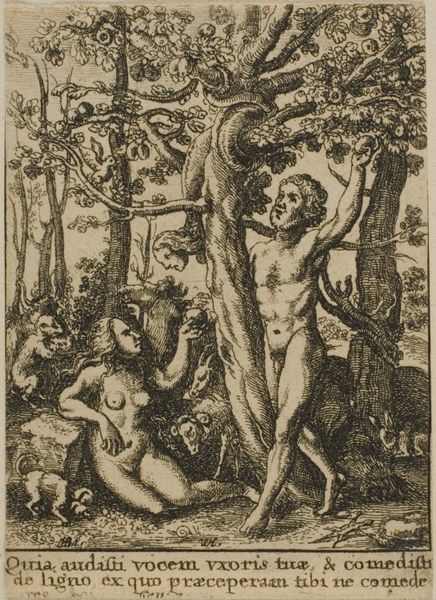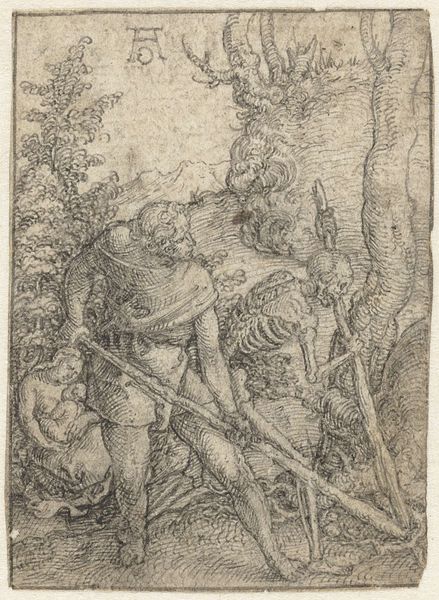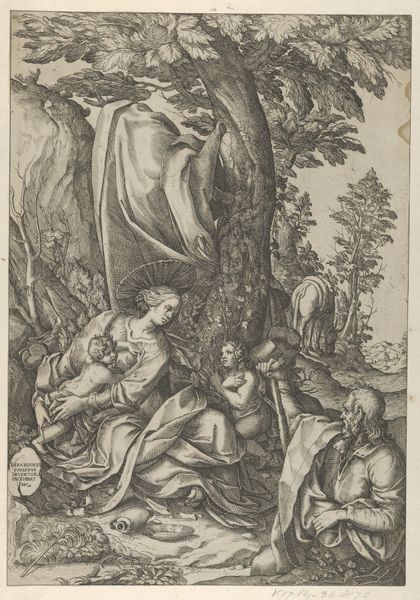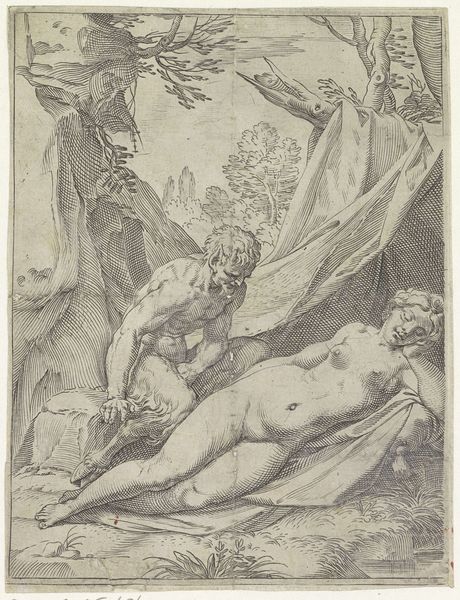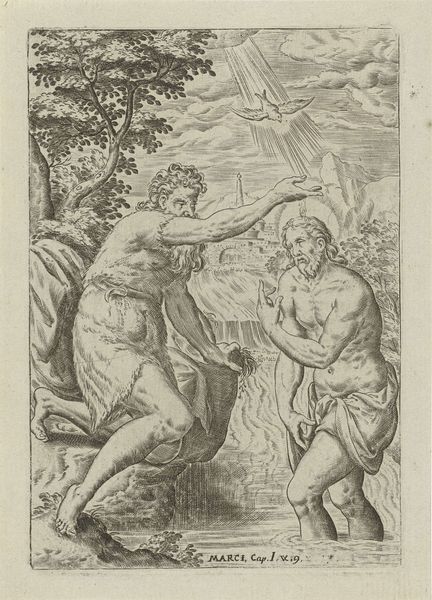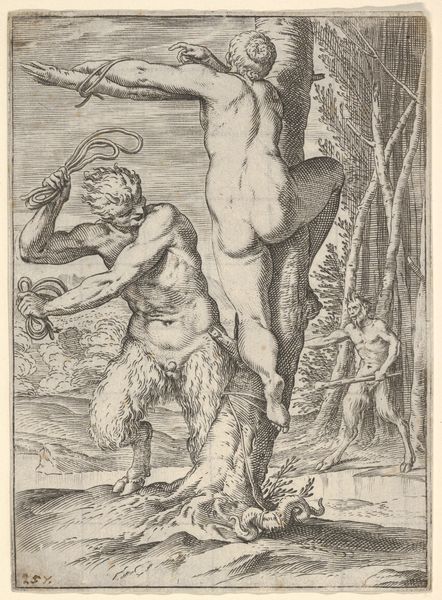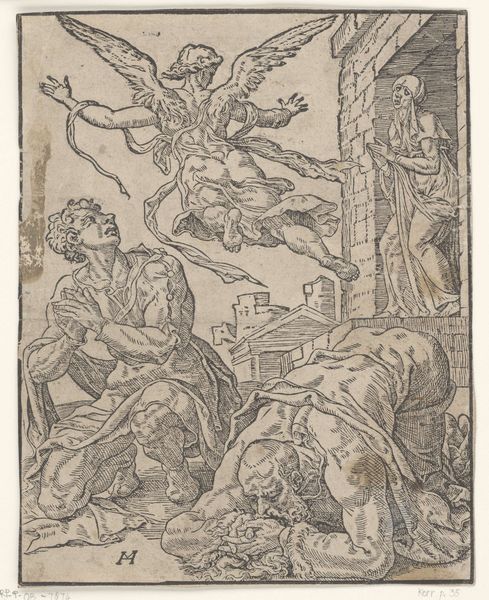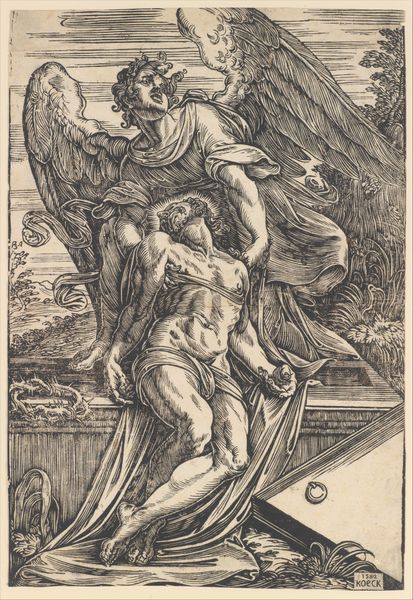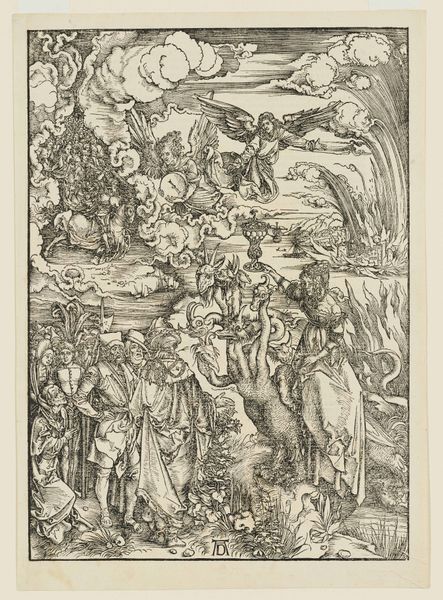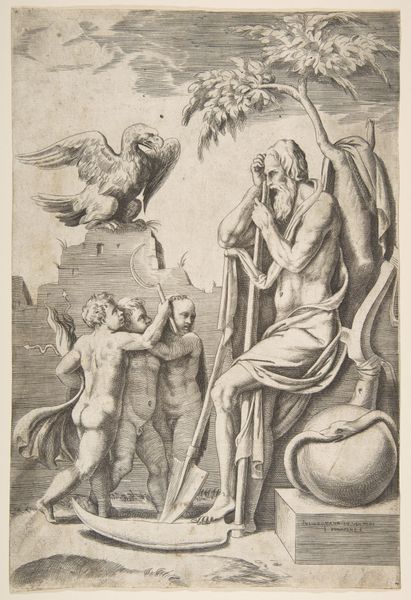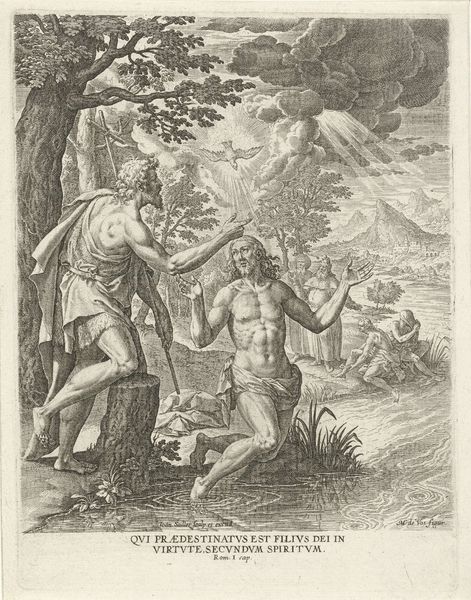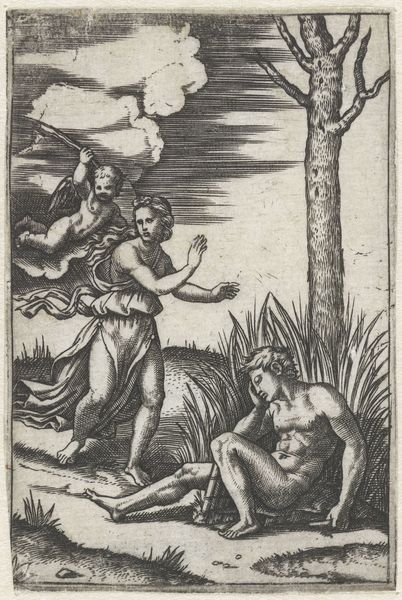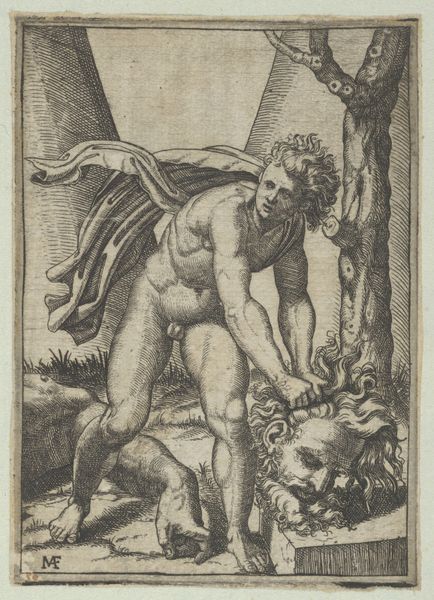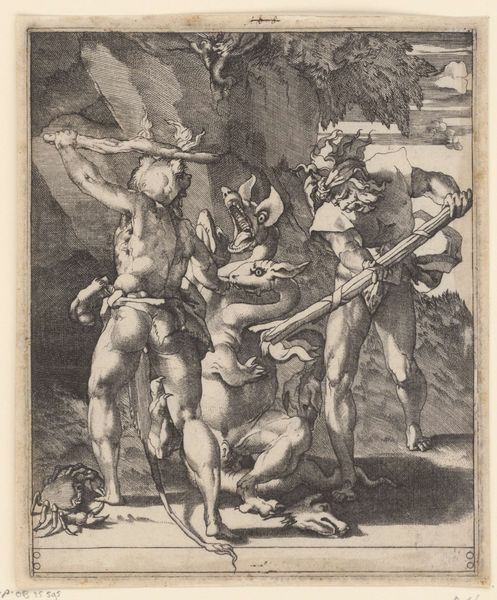
Garden of Eden, from the Dance of Death 1651 - 1800
0:00
0:00
Dimensions: Sheet: 2 15/16 × 2 3/16 in. (7.5 × 5.5 cm)
Copyright: Public Domain
This small engraving, "Garden of Eden," by Wenceslaus Hollar presents us with the quintessential scene of temptation. Here, the serpent, entwined around the Tree of Knowledge, offers the fateful apple to Eve, while Adam reaches out to partake in the forbidden fruit. Observe the serpent, a potent symbol stretching back to ancient Mesopotamian myths, where it often represented chaos and primal energy. In the Abrahamic tradition, it embodies temptation, deceit, and the fall from divine grace. Note that the apple isn't explicitly mentioned in the Genesis; its association with the forbidden fruit emerged later, possibly due to a linguistic pun, linking 'malum', meaning 'evil', to 'malum', meaning 'apple'. The serpent’s enduring presence across cultures reveals a collective anxiety about hidden dangers and repressed desires. Its ever-shifting form mirrors the cyclical nature of transgression and redemption, a recurring motif in the human drama. This image resonates with us because it taps into our deepest fears and primal instincts, the ever-present conflict between obedience and the allure of the unknown.
Comments
No comments
Be the first to comment and join the conversation on the ultimate creative platform.
